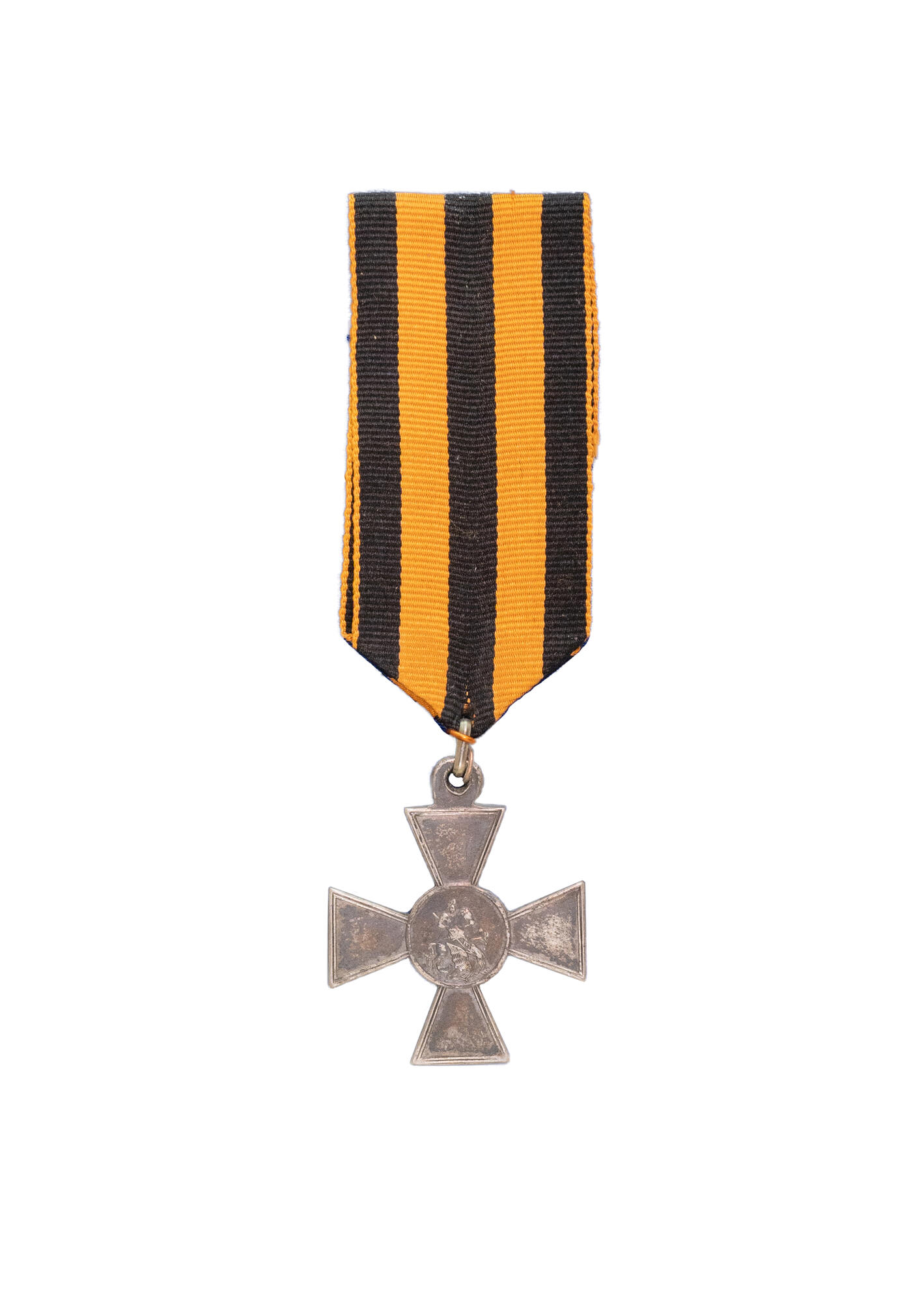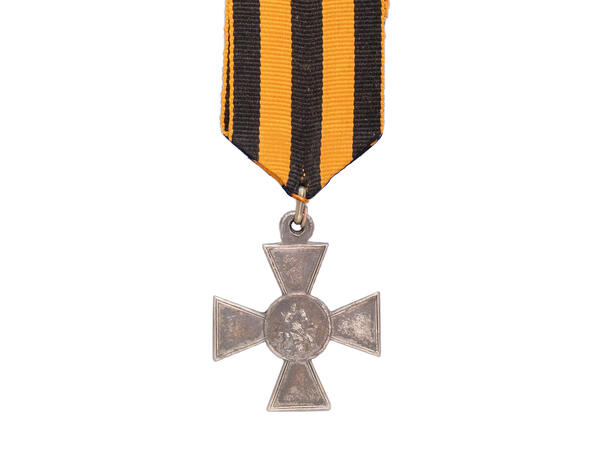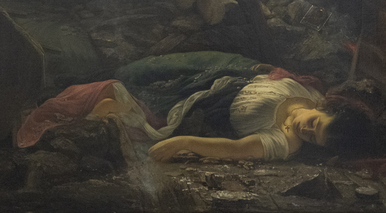The Order of St. George conferred on military officers was the highest military award of the Russian Empire. And on February 13, 1807, a special Decoration of the Military Order of St. George was established for the lower ranks. It was awarded for special bravery to soldiers, sailors and non-commissioned officers of the Russian Guard, army and navy. The sign could only be earned by those who performed a feat of arms: for example, captured an enemy banner, captured an enemy officer, saved the commander’s life, or was the first to enter an enemy fortress during an assault.
The insignia from the museum collection was made in the mid-19th century. It belonged to the sailor of the 42nd naval crew of the Black Sea Fleet D. Putilov.
The idea to create the award appeared on January 6, 1807. An unsigned note was delivered to Emperor Alexander I. In it, an anonymous author proposed “to establish the 5th class or a special department of the Military Order of St. George for soldiers and other lower military ranks <…> which may be distinguished, for example, by a silver cross on the St. George ribbon, passed through a buttonhole.” In the same year, the Emperor issued a manifesto in which he commanded to wear the Decoration of the Military Order on a ribbon of the same colors as the Order of St. George.
Like the order, the badge was made in the form of a four-pointed numbered cross. On its obverse, George the Victorious was depicted sitting astride a horse and piercing a dragon with a spear. Such crosses were cast in silver and worn on the chest on the St. George’s ribbon.
Along with this insignia, the recipients received privileges and benefits: their salaries were increased by a third, which the soldiers would receive even when they retired. In addition, those who received the award were excluded from the taxable estate — they were exempted from the need to pay the poll tax.
From 1807 to 1855, the rule was in force: a soldier who received the decoration had to wear it always. However, if he received the higher Order of St. George, then he no longer wore the insignia.
At first, the Decoration of the Military Order did not have a class, but on March 19, 1856, a special Decree of Emperor Alexander I was issued, which established four classes of the award. Since that time, crosses of the 1st and 2nd classes began to be cast in gold, while the 3rd and 4th ones remained silver. The award, as before, was worn in the buttonholes on the St. George’s ribbon, but its reverse side now featured the class. The awards were given gradually from the lowest class to the highest. Those who received the Decoration of all four classes became Full Cavaliers of the Order of St. George.
The insignia from the museum collection was made in the mid-19th century. It belonged to the sailor of the 42nd naval crew of the Black Sea Fleet D. Putilov.
The idea to create the award appeared on January 6, 1807. An unsigned note was delivered to Emperor Alexander I. In it, an anonymous author proposed “to establish the 5th class or a special department of the Military Order of St. George for soldiers and other lower military ranks <…> which may be distinguished, for example, by a silver cross on the St. George ribbon, passed through a buttonhole.” In the same year, the Emperor issued a manifesto in which he commanded to wear the Decoration of the Military Order on a ribbon of the same colors as the Order of St. George.
Like the order, the badge was made in the form of a four-pointed numbered cross. On its obverse, George the Victorious was depicted sitting astride a horse and piercing a dragon with a spear. Such crosses were cast in silver and worn on the chest on the St. George’s ribbon.
Along with this insignia, the recipients received privileges and benefits: their salaries were increased by a third, which the soldiers would receive even when they retired. In addition, those who received the award were excluded from the taxable estate — they were exempted from the need to pay the poll tax.
From 1807 to 1855, the rule was in force: a soldier who received the decoration had to wear it always. However, if he received the higher Order of St. George, then he no longer wore the insignia.
At first, the Decoration of the Military Order did not have a class, but on March 19, 1856, a special Decree of Emperor Alexander I was issued, which established four classes of the award. Since that time, crosses of the 1st and 2nd classes began to be cast in gold, while the 3rd and 4th ones remained silver. The award, as before, was worn in the buttonholes on the St. George’s ribbon, but its reverse side now featured the class. The awards were given gradually from the lowest class to the highest. Those who received the Decoration of all four classes became Full Cavaliers of the Order of St. George.



